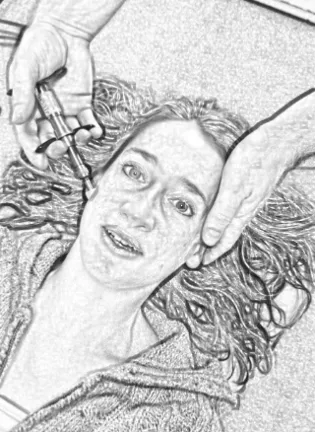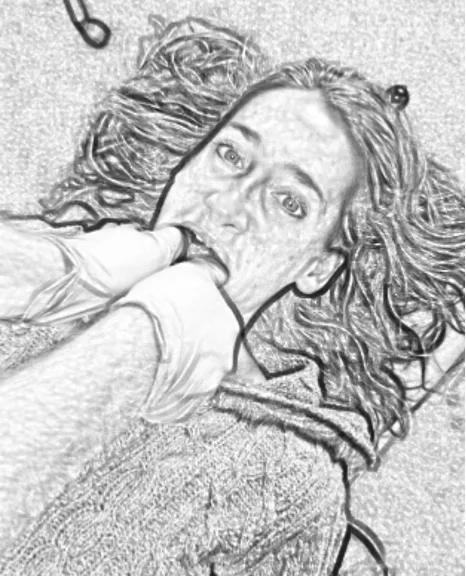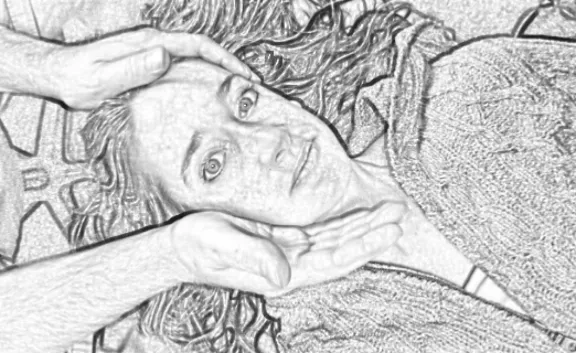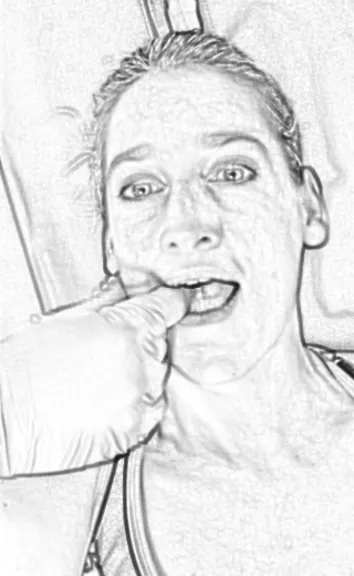Do you have jaw pain? Jaw stiffness? Does your jaw lock up? Click uncomfortably?
All of the chiropractors at Drummond Chiropractic are excellent with jaw pain relief and TMD (jaw disfunction).
How we treat jaw pain:
YOUR JAW NEEDS movement, not just so you can talk, chew, and swallow, but to support cell repair in damaged tissues and to facilitate the flow of nutrients in and waste out required for the repair process.
A chiropractor can aid in restoring the jaw’s normal movement. They can manipulate your jaw back into its groove and improve its range of motion.
How Movement Aids in the Repair Process
Blood delivers nutrients to joints (like the jaw), but for the nutrients to seep into the joint fluid, the joint fluid has to stir. Joints don’t have little hearts to do this. Movement of the joint itself stirs the joint fluid and allows the blood in the capillary bed to deliver nutrients deeper inside the joint fluid. The cells inside the joints receive the nutrients they need for this rebuilding process. Thus, simply moving your joints helps them heal.
This is true for any joint, including the jaw. If you can’t move your jaw to its full potential, you starve your jaw. If the jaw does not have enough movement to stir the fluid that feeds the cells that repair it, it will degenerate over time.
Understanding What a Chiropractor Will Do for jaw pain
Chiropractors can manipulate the jaw in different ways. Some use a tool called the Activator or another type of mechanical adjusting tool (Figure 9-1).
Figure 9‑1: Using a chiropractic adjusting tool to treat the jaw.
Some may manipulate the jaw using their hands (Figure below).
Figure 9‑2: Dr. Dallas manually manipulating my jaw.
Some may manipulate your jaw by putting on gloves and taking a hold of your mandible (jawbone) to adjust the temporomandibular joint (TMJ, the joint of the jaw; Figure below).
Figure 9‑3: Another way to manipulate the jaw.
Make sure your practitioner also addresses any misalignments or tight muscles in your neck because this can also affect the healthy movement of the jaw. The muscles in the front of your neck affect the movement of the jaw. Tight or imbalanced muscles can negatively affect the health of the jaw and inhibit its healing.
Your chiropractor should also teach you how to address your TMD yourself. They should go over exercises and stretches for your specific condition to help facilitate your healing. Every time you talk, chew, swallow, or move your neck, you are at risk of undoing any treatment you receive.
Massaging the Jaw
Figure 9‑4: Professional jaw massage.
Releasing muscle tension in the jaw can provide relief from TMD and help improve your jaw movement. A health professional like a physical therapist, chiropractor, or massage therapist can massage your jaw muscles (pterygoid, masseter, temporalis, and anterior neck muscles).
To massage the pterygoid muscles, the practitioner puts on gloves and inserts her fingers inside your mouth because the jawbone is in the way of massaging this muscle from the outside (Figure 9-4).
Having your masseter and pterygoid muscles massaged is often very painful. These muscles are some of the most sensitive to work on in the whole body because you use them thousands of times a day, every time you talk, chew, or swallow. You know how sore a muscle can be after you’ve used it all day. Plus, these muscles rarely if ever get touched, let alone massaged. Any area on your body that is rarely touched becomes hypersensitive to touch. So this is not a pleasant treatment, but it really does work.
When done well, you should notice some immediate relief; you should expect less pain and/or more movement of the jaw.
CUPPING FOR THE JAW
If you have seen perfectly round discolorations on an athlete’s skin you have seen the outward signs of cupping
Cupping involves creating a negative pressure to tissues. A therapist uses a cup to create a vacuum that draws the skin up and away from the muscles (Figure 11-1). This is the opposite of negative pressure used during a regular massage, where the practitioner physically presses on the tissue to push out the metabolic waste and break up adhesions.
There are a variety of ways to create negative pressure with cupping. Glass cups are usually used because they are durable and easy to sanitize. Different sized cups are used for different sized muscles and different applications
The vacuum in the cup can be created a variety of ways. One involves heating the air inside the glass cup and then placing it on a trigger point or acupressure point. As the air cools, it creates a vacuum, and the skin gets drawn up into the cup. A newer technique uses a pump to suck the air into the cup to create a vacuum.
As the skin gets sucked into the cup, the skin layer separates from the muscle layer, breaking up adhesions in the fascia. Leaving the cup at these points for a few minutes brings more blood to these tissues. As a result, the tissues heal, and their function improves.
Leaving a cup on a spot for too long can cause bruising or blistering, so be sure to communicate to your practitioner if the cups are getting uncomfortable.
A New Application For This Ancient Tool
Some massage therapists use cups as a massage tool. They apply oil to the skin first so they can glide the cup over a region (Figure 11-5). This type of massage is a negative pressure massage. Unlike a regular massage, in which positive pressure squishes metabolic waste out of the muscles, a massage therapist can use the negative pressure of the cup to milk metabolic waste out of the region by gliding the cup over a region.
You may prefer this negative massage to a deep-tissue (positive) massage when you are too tender to handle pressure to a tissue. Some find this technique more comfortable. Some prefer positive pressure. The only way to know which you prefer is to try each and decide for yourself which feels more comfortable and effective for you.
Usually, cupping results in reddening of the skin. I believe that if you bruise heavily afterwards, the practitioner used too much suction on you. More is not always better. Bruising is a sign of tissue damage, not healing, but sometimes a little bruising is unavoidable. When cupping is done well, bruising should be minimal, and the reddening of the skin should fade within a few days.
I have heard that when done well, cupping also helps with wrinkles because it brings blood to the surface, feeding the skin and keeping it plump. Bonus!
You don't have to be in pain!
Your jaw does not have to click, clack or lock!
Why Wait?
to schedule with us today!
For More Information Check Out Dr. Karin's Books
To learn more about how we treat here at Drummond Chiropractic, CLICK HERE.
To go back to our home page, CLICK HERE.
You do not have to suffer
with jaw pain, clicking or locking.
We can help!
Why Wait? Click HERE to schedule!
Drummond Chiropractic, LLC
Your Bloomington Downtown Jaw Pain Specialists
565 N Walnut St
Bloomington, IN 47404
(812) 336 -2423









